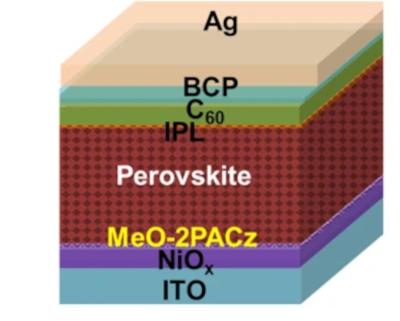Researchers from Japan's National Institute for Materials Science (NIMS) and Hokkaido University have designed an inverted “n-i-p” perovskite solar cell with a new bond/charge regulated defect passivation technique, enabled by introducing bifunctional molecules onto the perovskite absorber. The device exhibited a low open circuit voltage deficit and impressive stability.
The newly-fabricated solar cell with was based on a perovskite material that doesn't contain methylammonium (MA) molecules. These molecules have intrinsic thermal instability and contribute to increasing the typical thermal instability of perovskite PV devices.
The scientists reportedly built the cell with a new bond/charge regulated defect passivation technique consisting of introducing bifunctional molecules onto the perovskite absorber. “We demonstrate that the different molecular properties lead to distinct differences in the film growth, material distribution, and device characteristics,” they explained. “The bifunctional molecular passivation significantly affects the film morphology and surface chemistries by their basicity and adsorption energy.”
They used, in particular, molecules with an alkyl core known as piperazine dihydriodide (PZDI), which they said mitigates surface and bulk defects, while modifying surface chemistry or interfacial energy band.
The group designed the cell with an indium tin oxide (ITO) substrate, a hole transport layer (HTL) made of nickel(II) oxide (NiOx), a dimethoxy carbazole (MeO-2PACz) layer, the perovskite absorber, an interfacial passivation layer (IPL) based on the bifunctional molecules, an electron transport layer (ETL) based on a buckminsterfullerene (C60), a bathocuproine (BCP) buffer layer, and a silver (Ag) metal contact.
Tested under standard illumination conditions, a 1cm2 solar cell built with this configuration exhibited a power conversion efficiency of 23.17% ad a low open circuit voltage deficit of around 0.327 V. The scientists also found the device showed negligible J-V hysteresis and excellent operational device stability under heat and humidity stress compared to control devices.
“These results indicate the surface treatment with PZDI is propitious for defect passivation due to stronger localized nitrogen bonding in halide perovskite film and hence leads to the superiority of device performance.”




